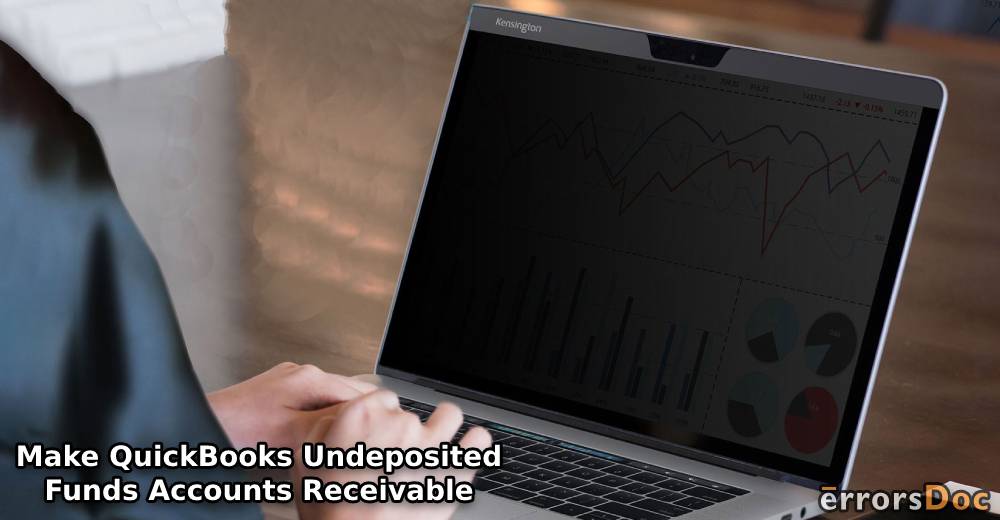The Undeposited Funds Account in QuickBooks plays a special role. Basically, it is an internal account by QuickBooks that is used to hold payments (received from invoices) until you deposit them in banks. If you want to know how to make QuickBooks undeposited funds accounts receivable, read this guide till the end.
In this particular guide, you will learn what is the undeposited funds account in QuickBooks, types of payments, edit bank deposits, and more.
What is an Undeposited Funds Account in QuickBooks and Why to Use it?

An Undeposited Funds account in QuickBooks is an internal account to hold payments until you are ready to deposit. This feature works like a safe locker where you can keep your payments safely until you send them to your bank.
Most accountants find this feature helpful as it allows them to match the bank deposit with the actual payment. For instance, most of the credit card processors deposit the fund in your bank 2 days after the actual payment.
In this scenario, accountants can leave the undeposited payments in the undeposited funds until the payment gets deposited. Later you can move the payments to your bank in QuickBooks. Let’s know the procedure of QuickBooks online undeposited funds to bank accounts.
What are the Types of Payments?
The Undeposited Funds account in QuickBooks serves as the default Deposit To account when the payment is received from invoices or you enter a Sales Receipt or use a payment item on invoices.
This feature is designed to work with bank deposits and receive payments to complete the invoice process. In addition, this workflow can be used for single as well as group payments. Let’s understand what these are.
Single and Grouped Payments
With single invoice payments, you can simply skip the process of Undeposited Funds and deposit received payment into your checking accounts (credit or savings). This will show up the processed payments in your bank statement.
In the case of grouped payments, an Undeposited Funds account makes it easier for you to receive payments and manage transactions.
For instance, a customer pays three separate invoices at once and your bank account recognizes those three payments as a single deposit. Similarly, if you want to combine the deposits into a QuickBooks checking account, you can group those multiple payments as a single deposit. This is where an Undeposited Funds account can be used.
Suppose, you still have those three payments paid from a customer. Now to make bank deposits, all those three payments wait in the Select the payments included in this deposit section in the Undeposited Funds account in QuickBooks.
At this point, you can select those three payments and convert or group them into a single deposit. And when you reconcile your QuickBooks accounts against the bank statements, the transaction will match the amount in QuickBooks.
How to Edit Bank Deposits in QuickBooks Online?
If you ever have to edit the bank deposits or send the payment back to the Undeposited Funds accounts in QuickBooks, you can follow the steps instructed below.
- Firstly, go to the “Edit” option and redistribute out the deposits.
- Thereafter, you can eliminate the payments, e.g., all those three payments which you grouped before.
- Then, you can click on the “Save” option.
Once done performing these steps, it will show you the new correct amount in your account. So, this is how you can edit the bank deposits in QuickBooks Online.
How to Set up Undeposited Funds Account in QuickBooks?
- As mentioned earlier, the Undeposited Funds account is set as the default ‘deposit to’ account whenever you enter a sales receipt or receive the invoice payment. You should always double-check the ‘deposit to’ account before you complete any transaction.
- When you are done paying for an invoice or you are receiving a payment, you can click on the Global Create Button.
- Thereafter, you can select the Receive Payment option; the Undeposited Funds account is already selected here.
- Next to this, you can select the customer with the help of a drop-down menu.
- At this point, the open invoice will populate on the list automatically.
- Now, you can choose the payment method and verify the amount you received.
- You have the authority to change the location where you want the amount to ‘deposit to’ before you make a bank deposit by selecting another account. If you deposit a single payment to your checking account directly, your job will be done and the invoice will be processed.
- Once you receive the payment into your Undeposited Funds account in QuickBooks, your next move is to deposit the amount in your bank. After this, you can close the invoice.
Things to Remember while Making QuickBooks Undeposited Funds Accounts Receivable
The workflow of Undeposited Funds is unique to QuickBooks and this is necessary to follow each step carefully. While making QuickBooks Undeposited Funds accounts receivable, people tend to skip a few steps during the process. However, it is recommended to follow the workflow in order to ensure that you never double count the income or leave open invoices on your computer accidentally.
To Wind Up
The process of making QuickBooks Undeposited Funds accounts receivable is pretty simple. All you have to take care of each step while you deposit the payment from the Undeposited Funds account to the bank account.
In this guide, we have explained about QuickBooks online undeposited funds to a bank account. By following the aforementioned guidelines, you will be enlightened on the use of the Undeposited Funds account in QuickBooks, the process of making single or grouped payments, and edit the bank deposits in order to receive the payments in an undeposited Funds account in QuickBooks.
Do you want more such guides? If yes, here are the most requested guides about QuickBooks:
